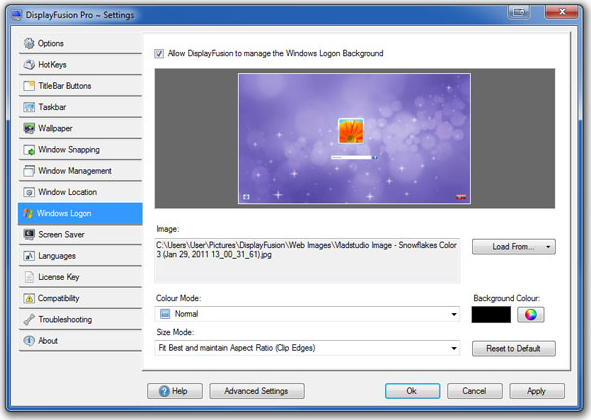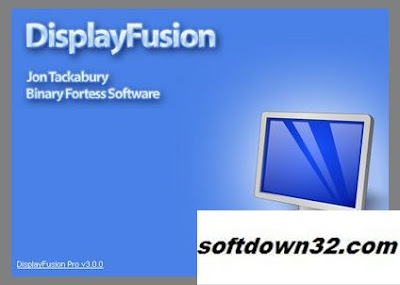

However, the two programs use the same installer. It can’t modify the Windows logon background, either. The popular free version of DisplayFusion doesn’t do per-monitor taskbars–the main selling point of the Pro app–and has a less comprehensive set of hotkeys. You can use the same background as your current wallpaper, but if you’re using DisplayFusion to randomly switch wallpapers at a set interval, this may not be a good idea: DisplayFusion has to pop up a UAC prompt every time it wants to change the Logon screen background. If you’re bored with the default Windows Logon screen background, DisplayFusion lets you easily change it. You can also configure the snapping distance, or have windows snap only when you hold a key down while dragging. DisplayFusion’s Window Snapping option does this, and can also snap windows the edge of each monitor. When dragging windows around on a large workspace, it’s often nice to have their borders snap together, so you can neatly line them up. So, for example, you could have the secondary monitor change wallpapers more often than the primary monitor, because it’s usually less crowded with windows. You can have the wallpaper randomly change on each monitor every now and then, and even set a different switching interval for each of your monitors. It has a dedicated interface for each of these websites for example, the Flicker interface lets you specify search keywords and specific Flickr groups you’d like to poll for images.


DisplayFusion can show a random image out of a collection stored on a local hard drive, but it can also grab images from Flickr and VladStudio. You can set different wallpaper for each monitor, or span a single image across all monitors. They rival John’s Wallpaper Switcher, which is saying something.

If you move your “real” taskbar to a different edge of the screen, DisplayFusion automatically moves the extra taskbar to the corresponding edge on its own monitor, so all screens always look alike.ĭisplayFusion Pro’s wallpaper management tools are powerful enough to warrant their own configuration interface, separate from the main Settings dialog. You can have it show icons only for windows on that monitor, or for all currently running applications. The extra taskbar looks just like the native Windows one, but has a different context menu. DisplayFusion Pro can correct this by adding a taskbar to each “extra” monitor. When my girlfriend started using multiple monitors last month, she was surprised to discover that the Windows taskbar doesn’t span monitors, but it shows only on the primary monitor.


 0 kommentar(er)
0 kommentar(er)
